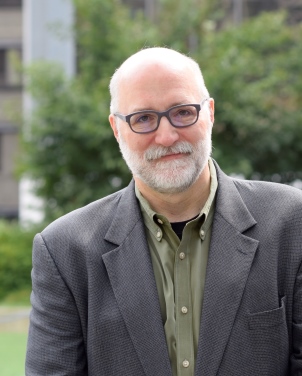The following piece is the first in a series of interviews with faculty on their responses to questions making a big impact in the news. John Jay Scholars on the News looks at tough issues through the lens of the research our scholars are producing, and informs the way we think about important debates and the role of public scholarship and evaluation. It was originally published on January 17, 2018.
After a year or more of heated rhetoric around ostensibly rising rates of violent crime in many American cities, recently published statistics showing crime rates in some of these cities falling sharply have captured the attention of policy makers and academics alike. Subsequent discussion in the public sphere has tried to link policing strategies to these reductions in crime; in New York City, for example, some of that discussion has looked at the cessation of stop-question-frisk policies in New York City and our record low rates of violent crime. Because John Jay is a college with a unique focus on policing and criminal justice-related issues, we reached out to some of our faculty and staff to find out what they think is causing crime rates to drop, and whether police forces can take some of the credit.
To start, we talked with Associate Professor Eric L. Piza from the Department of Law and Police Science. He was careful to begin by qualifying his answer, reminding us that the real world isn’t controlled like an experiment, but went on to suggest that proactive, evidence-based policing strategies the NYPD began in the ’90s may have contributed to recent declines in crime rates.
It’s always tough to attribute precise credit for crime declines. The real world isn’t a laboratory, so we can’t

Department of Law & Police Science
carefully control conditions and isolate causal mechanisms. But with that said, looking at policing research suggests that the NYPD deserves some credit for the crime reduction. Research evidence suggests that proactive, focused policing has a much greater impact on crime occurrence than reactive policing. Importantly, the de-commitment from stop-question-frisk did not spell the end of proactive policing in NYC. Rather, the NYPD has revamped their processes to emphasize team policing and enhance community engagement. Projects such as Cure Violence and Focused Deterrence have also dedicated additional resources to focus on the highest risk offenders and neighborhoods experiencing disproportionate levels of gun violence.
Expanding the focus to the historical crime decline, I think there’s also evidence to support the influence of police. When Commissioner [William] Bratton first arrived at the NYPD in the early 1990s, the rapid pace with which the agency deployed Broken Windows policing tactics left little time for the type of controlled evaluations that could rigorously test their influence. However, we now have ample research evidence to say that Broken Windows is indeed an effective crime reduction strategy so, in hindsight, I think we can say that the NYPD deployed an evidence-based crime reduction strategy in the 1990s.
We also reached out to Meaghan McDonald, Director of the Group Violence Intervention strategy at the National Network for Safe Communities. She broaded our perspective, highlighting strategies that are working in cities around the country, not just in New York.
Cities as different as Detroit, Newburgh [NY], New Haven and New York City have significantly reduced or maintained historically low levels of homicides and shootings over the past year. They did so in part by doing what we know can work: focusing law enforcement, community influence, and support and outreach resources for the people who are most likely to be the victims and perpetrators of violence.
People in groups — gangs and crews — are disproportionately involved in serious violence, and when police and communities concentrate their efforts on keeping these people alive and out of prison, they can maximize ROI [return on investment]. Agencies focusing on group violence are recognizing the power of advance communication to this population and, when a law enforcement response is necessary, making sure it is focused and legitimate.
When cities take this approach, they have a greater chance of fundamentally changing the dynamics of violence in their city.
Lest we feel overconfident about attributing causation, we were left with a word of caution from Jeffrey Butts, the director of the Research and Evaluation Center, that should guide all John Jay scholars whatever their field of study.

Research & Evaluation Center
When asked about fluctuating crime rates or differences in crime between cities, a genuine scholar starts with a raised eyebrow or furrowed brow and then goes on to describe various other factors that could be contributing to the difference. Researchers — as opposed to politicians — never point to just one cause. Only after careful investigation of other explanations will a researcher be bold enough to reject the null hypothesis, although they address cause and effect only in terms of ‘explained variance’ or ‘effect size.’
This is why the general public listens to politicians more than they listen to scholars and academics. It’s easier, and can be comforting when someone in authority provides a simple explanation for the frightening uncertainty that surrounds us. Researchers, however, thrive in uncertainty.
(Answers have been lightly edited for clarity.)

